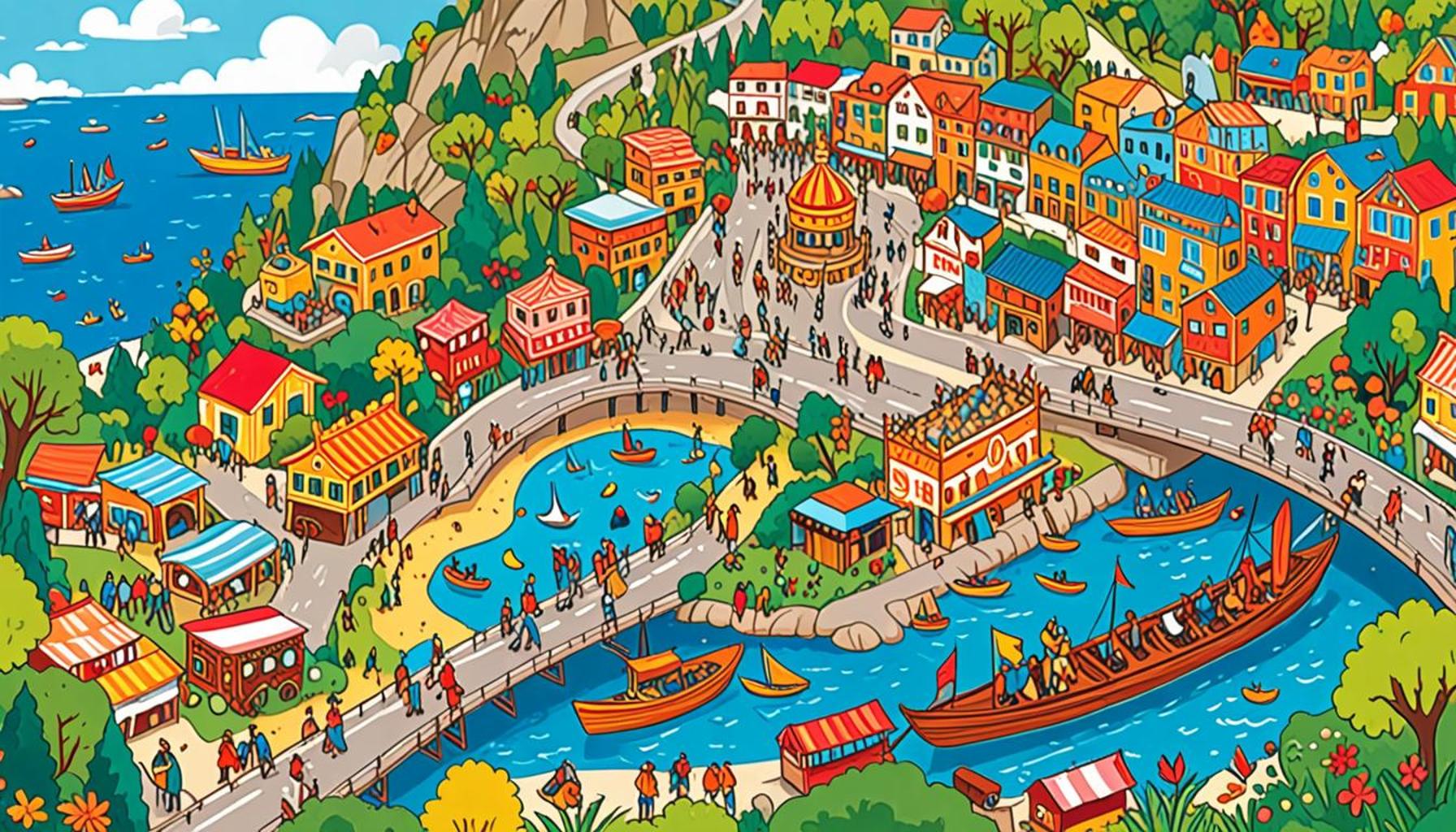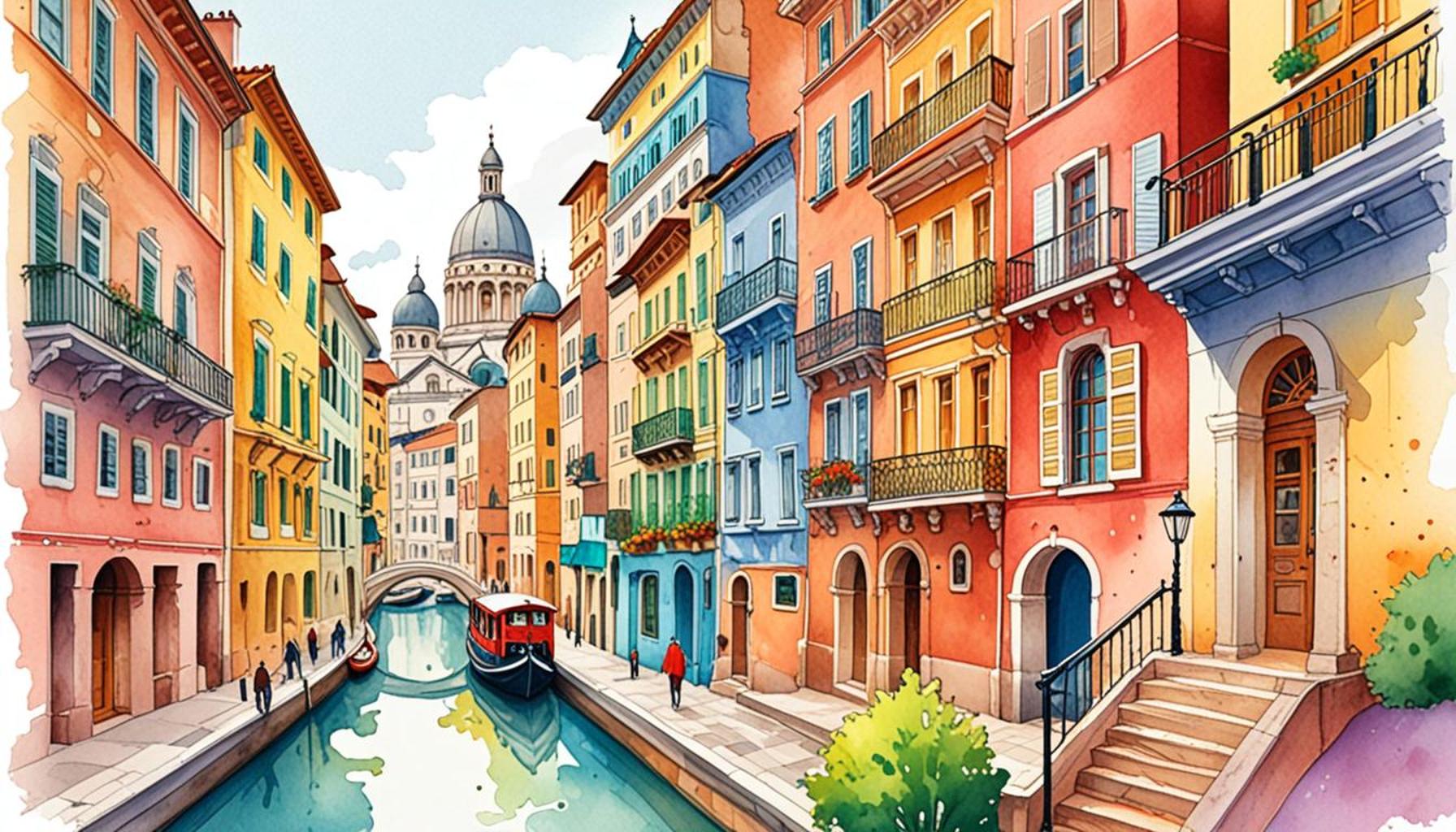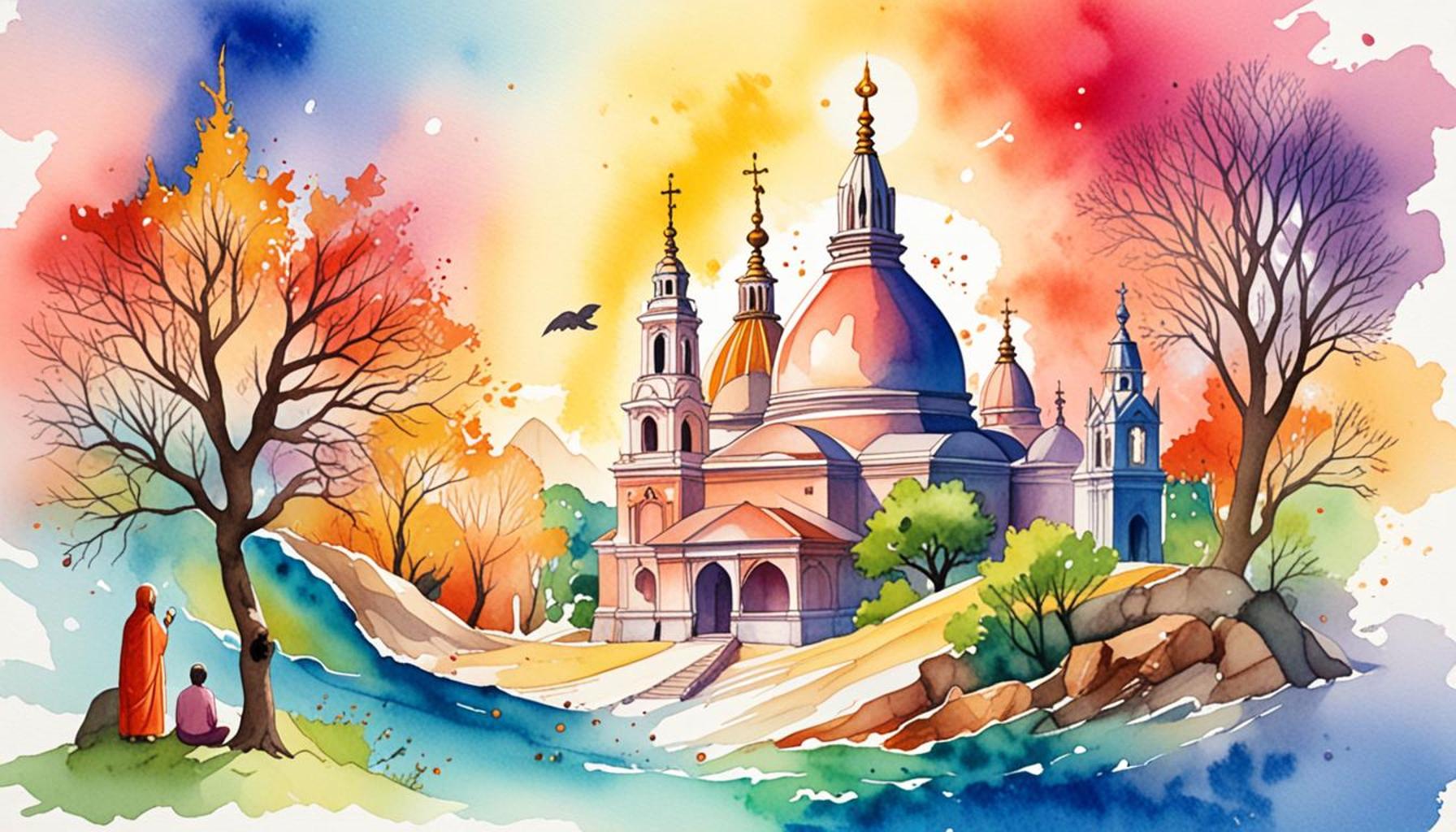Cultural Walks: Discovering Architecture and Design in Chicago
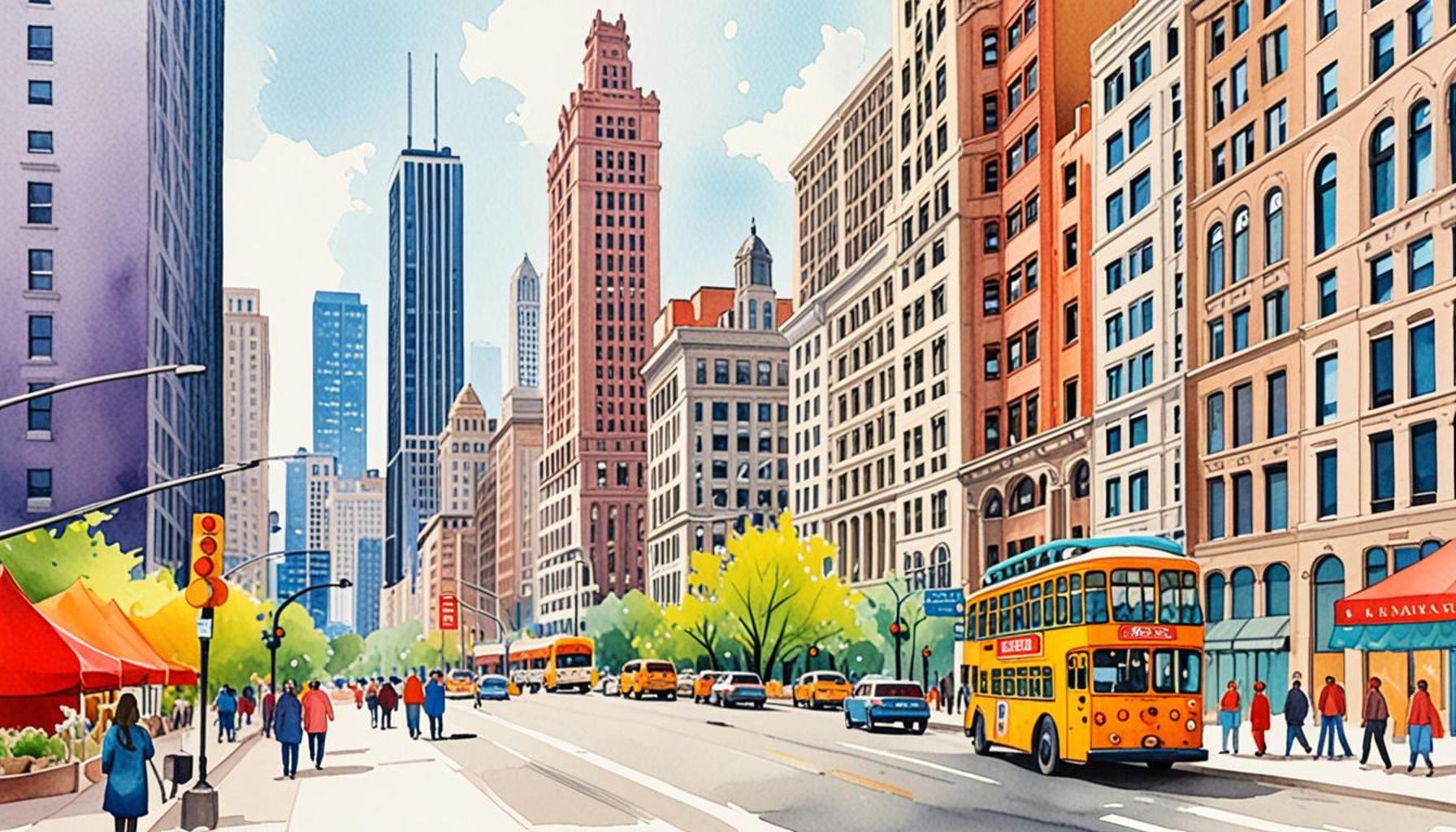
A Journey Through Architectural History
Chicago offers an extraordinary narrative through its breathtaking architecture and design. With every structure erected within its bustling streets, the city unveils a chapter of its rich cultural and historical evolution. Whether towering skyscrapers that flirt with the clouds or quaint structures tucked within residential neighborhoods, a stroll through the city encapsulates a vivid tapestry of artistic expression and social history.
Skyline Views
One of the top experiences in Chicago is soaking in the awe-inspiring views from the Willis Tower, formerly known as the Sears Tower. Standing at 1,450 feet, this architectural giant was once the tallest building in the world. Its glass and steel façade reflects the city’s vibrancy while the Skydeck offers a panoramic view that showcases other magnificent buildings like the John Hancock Center, a staple of Chicago’s skyline since its completion in 1969, known for its distinctive X-braced exterior.
Historic Landmarks
No exploration of Chicago’s architectural landscape is complete without acknowledging its historic landmarks. The Auditorium Building, completed in 1889 and designed by the renowned architect Louis Sullivan, is a prime example of Chicago’s cultural significance. This multipurpose venue blends aesthetics with function, remarkably housing a theatre and hotel under one roof. Similarly, the Chicago Cultural Center, featuring stunning stained glass domes and intricate mosaics, stands as a beacon of civic pride and artistic endeavor in the city.
Modern Marvels
Moving into modern design, the Aqua Tower captivates with its wave-like balconies and striking aesthetic, distinguishing itself as an innovative residential skyscraper in the Lakeshore East neighborhood. Moreover, the Fulton Market District has evolved into a hub of creativity and modern architecture, highlighting new structures that combine functional design with artistic flair, making it a favorite spot for both locals and visitors alike.
Architectural Movements
Chicago’s architecture is a collage of varying styles and movements, with each era contributing to the city’s unique identity. The grandeur of Beaux-Arts architecture is well exemplified by the Chicago Public Library, known for its ornate details and classical grandeur. In contrast, the Art Deco influence is embodied by the Merchandise Mart, originally built as a wholesale marketplace, featuring intricate carvings and stylized designs that reflect the optimism of the 1920s. Lastly, the sleek simplicity of Modernism is best seen in the Spertus Institute, a repository of Jewish culture and learning, with its clean lines and functional design heralding a departure from traditional aesthetics.
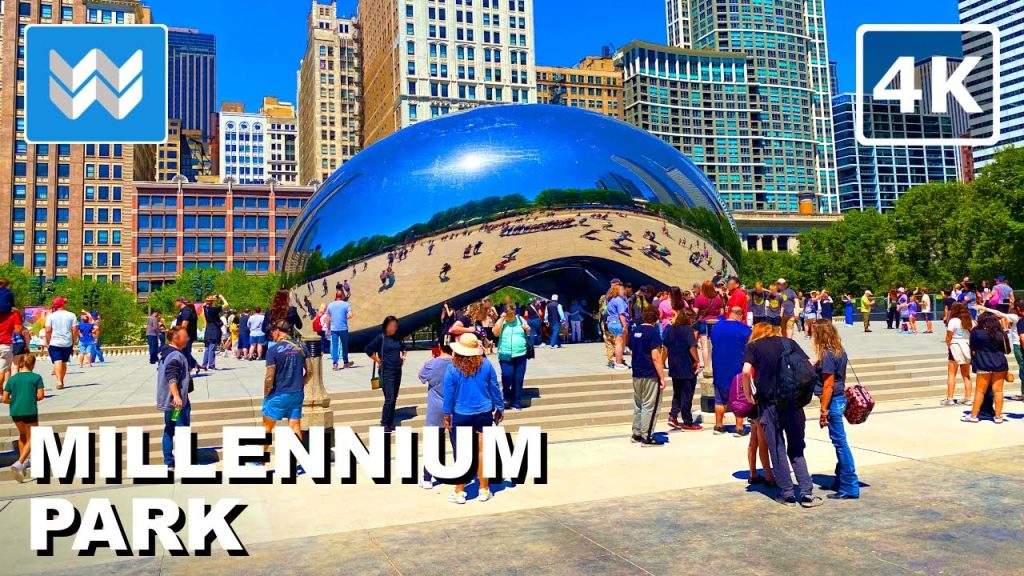
For both residents and tourists, embarking on these architectural walks can be an eye-opening experience. It’s a chance not just to admire, but also to comprehend how architecture mirrors the social currents and historical milestones of the times. Chicago is not merely a destination; it is an essential nexus for architecture and design aficionados, inviting exploration, inspiration, and a deeper appreciation of its creative spirit. Each step offers an opportunity to discover why this city remains at the forefront of architectural innovation in the United States.
EXPLORE MORE: Click here to dive into family-friendly historic adventures
Diving Deeper into Architectural Treasures
As you venture further into the heart of Chicago, one quickly realizes that each architectural style and design element tells a story. This city is an open-air museum, showcasing the evolution of American architecture from its early days to contemporary marvels. Along the way, architecture enthusiasts can witness the interplay of culture, technology, and artistic expression that has shaped this urban landscape into one of the most distinctive in the nation.
A tapestry of Cultural Influences
Chicago’s architectural identity is profoundly shaped by its diverse cultural influences. European immigrants brought their architectural preferences and traditions, resulting in a rich melange of styles that define many neighborhoods. The Prairie School movement, renowned for its connection to nature, is epitomized by the work of architect Frank Lloyd Wright, particularly in the Robie House in Hyde Park, which harmoniously blends with its surroundings and celebrates the American landscape.
Architectural Styles in Focus
To appreciate the depth of Chicago’s architectural heritage, several iconic styles deserve particular attention:
- Gothic Revival: The University of Chicago showcases this style with its magnificent chapel and other buildings, characterized by pointed arches and intricate stone work.
- Chicago School: This movement introduced a skeletal framework of steel that allowed for higher buildings. The Auditorium Building is an excellent example, merging function and aesthetic in a revolutionary way.
- International Style: The sleek, minimalist design philosophy finds its home in buildings like the Crown Hall at the Illinois Institute of Technology, demonstrating the elegance of unadorned structures.
Exploring Neighborhood Highlights
On your cultural walks, certain neighborhoods stand out as architectural hubs worth exploring. The Loop is a vibrant area filled with soaring skyscrapers and historical buildings. Here, art and architecture coexist, with the mesmerizing Chagall mural in the Washington Street underpass providing a pop of color amidst the concrete. In the Wicker Park area, eclectic designs showcase the neighborhood’s artistic spirit, with converted loft spaces and historic homes representing the ongoing transformation of urban spaces.
Guided Tours and Self-Exploration
For those seeking a structured approach, numerous guided tours highlight key architectural feats while sharing fascinating insights into the stories behind each building. Organizations like the Chicago Architecture Foundation offer various themed tours that cater to both history buffs and casual walkers. Alternatively, urban adventurers may prefer to explore at their own pace, utilizing mobile apps and maps to uncover hidden gems off the beaten path.
Ultimately, participating in Chicago’s architectural walks fosters a deeper understanding of the city’s diverse cultural fabric. Through a blend of grand gestures and minute details, these walks illuminate how history continues to shape the present, urging each individual to look up, admire, and reflect on the artistry that surrounds them.
Cultural Walks: Exploring the Heart of Chicago’s Architectural Heritage
When we think of Chicago, we often envision its iconic skyline, characterized by towering buildings that tell a story of innovation and design. The city is a melting pot of architectural styles, making it the perfect destination for a cultural walk. From the historic grandeur of the Art Deco structures to the sleek lines of contemporary designs, each corner of Chicago offers a different narrative woven through its unique architecture.
Participating in a cultural walk can significantly enhance your understanding of Chicago’s urban tapestry. These guided tours often provide insights into the historical context and architectural significance of landmarks, revealing stories you might not discover on your own. For example, the Chicago School of architecture, which emerged in the late 19th century, introduced revolutionary concepts that changed urban planning and design.
As you stroll along the streets, expect to see a delightful mix of styles. The Gothic Revival buildings, such as the famed Tribune Tower, stand in vibrant contrast to the Mid-Century Modernist and contemporary structures like the Willis Tower and 800 North Michigan Avenue. Each architectural piece is a testament to the city’s evolution and resilience.
Moreover, cultural walks do not only cater to architecture enthusiasts; they invite anyone curious about Chicago’s past and its artistic evolution. Many tours also emphasize public art installations that dot the city, enriching the experience further. From interactive installations to sculptures that provoke thought, Chicago’s artistic landscape adds depth to the architectural beauty.
In essence, cultural walks offer an experiential education that combines history, art, and design in one captivating journey. Whether you are a local resident or a visitor, taking part in these walks provides a deeper appreciation for the dynamic fabric that makes up this incredible city. With every step, you’re not just observing architecture; you are connecting with its cultural heritage and discovering the essence of Chicago.
| Category | Advantages |
|---|---|
| Cultural Enrichment | Gain a deeper appreciation of Chicago’s diverse architecture and design. |
| Historical Insight | Discover the stories behind iconic buildings and their place in Chicago’s history. |
As you participate in a cultural walk, you embark on a journey that transcends mere sightseeing; you engage with the very soul of Chicago.
DIVE DEEPER: Click here to uncover more natural wonders
The Intersection of Art and Architecture
As visitors explore Chicago, they will encounter a unique fusion of art and architecture that brings the city to life in extraordinary ways. This symbiosis is evident in various installations and buildings that reflect the creativity and innovation breathing through the urban environment. Public art is not merely a supplement to Chicago’s architectural landscape; it plays a fundamental role in defining neighborhoods and enhancing the aesthetic experience for residents and visitors alike.
Sculpture Parks and Installations
One exceptional example is Millennium Park, where art installations like Cloud Gate, affectionately known as “The Bean,” draw throngs of admirers. This striking stainless-steel sculpture by Anish Kapoor reflects the skyline and creates an interactive experience, transforming how locals and tourists see the city. At night, Jay Pritzker Pavilion, designed by Frank Gehry, showcases not only outdoor concerts but also the stunning architectural language of steel and curves that define modern design.
Another notable site is Grant Park, which not only hosts grand public events like the annual Chicago Blues Festival but is also home to several notable sculptures. Each piece offers a glimpse into the creative genius of the artists, inviting a contemplative discourse between the observer and the artwork—an essential ingredient in understanding Chicago’s cultural narrative.
Architectural Innovation in the Public Sphere
Moreover, Chicago’s commitment to integrating art into public spaces can be seen in the numerous mural projects that decorate the sides of buildings. From the vibrant alleys of Pilsen, filled with colorful murals celebrating Mexican heritage, to the dramatic pieces in the East Garfield Park neighborhood, these murals act as reflections of cultural identity and community resilience. Artists like Hebru Brantley, with his globally recognized works, reinforce the importance of local voices in shaping the city’s artistic dialogue.
Architectural Iconography
Chicago’s architectural narrative also speaks to an evolution through its use of iconic materials. The city serves as a showcase for terra cotta, a material that features prominently in early 20th-century structures, exemplified by buildings like the Carson, Pirie, Scott and Company Building. This remarkable structure not only exhibits functional design but also details an aesthetic charm that challenges modernity while celebrating history.
Furthermore, as sustainability emerges as a pivotal theme in architectural design, Chicago answers this call with buildings like the Bosch Garden in the West Loop, which incorporate green technologies and eco-conscious materials that harmonize with urban living. This points to a broader shift towards environmentally friendly architecture, showcasing how the city is stepping into the future while respecting its rich past.
Family-Friendly Architectural Walks
Families exploring Chicago’s architectural wonders benefit from engaging, educational experiences tailored to all ages. The architectural boat tours along the Chicago River provide an unforgettable way to witness the skyline while learning about the historical significance of each building. These tours expertly weave storytelling into architecture, making complex designs accessible for younger audiences.
For those looking to blend architecture with adventure, the Chicago Riverwalk features a fascinating collection of cafes, art installations, and eclectic structures, making for a perfect family outing. With its interactive experiences, families can explore the intricacies of the city’s architectural styles while enjoying leisure time by the water.
Through various intersections of art, history, culture, and design, Chicago’s architectural walks open avenues for exploration that resonate within the hearts of both visitors and residents. Each step taken on these paths unveils a deeper understanding of how architecture not only shapes the skyline but also tells stories of resilience, innovation, and community spirit. Discovering the architectural gems of this vibrant city fosters an appreciation for the artistry that pervades every corner of Chicago.
DISCOVER MORE: Click here to uncover budget-friendly getaways
Conclusion: Embracing the Architectural Journey
In conclusion, Chicago stands as an unparalleled testament to the rich tapestry of art and architecture. Its cultural walks invite both locals and visitors to embark on transformative journeys through neighborhoods that illustrate the city’s storied past and vibrant present. From the reflective surfaces of Cloud Gate in Millennium Park to the intricate murals that breathe life into urban spaces, each turn reveals a new facet of Chicago’s identity.
The fusion of functionality and creativity encourages a deeper understanding of how architecture serves as a canvas for cultural expression. Innovative designs, like the eco-conscious Bosch Garden, exemplify Chicago’s forward-thinking approach while respecting its historical roots. Walking through this architectural wonderland not only fosters appreciation for the city’s structural beauty but also highlights narratives of resilience and artistic expression that resonate with diverse communities.
Moreover, the availability of family-friendly experiences ensures that learning about architecture is accessible to all ages. Whether through engaging boat tours or the lively atmosphere of the Chicago Riverwalk, the city makes exploration an enriching adventure. As Chicago continues to evolve, it remains essential for future generations to embrace and celebrate the architectural gems that define its character.
Ultimately, cultural walks in Chicago offer more than mere sightseeing; they provide a portal into the heart of a city that marries history with modernity, challenging observers to reflect on their own experiences. As you wander the streets, take the time to admire the artistry that surrounds you and let each building and installation inspire a newfound appreciation for the cultural landscape of the Windy City.

